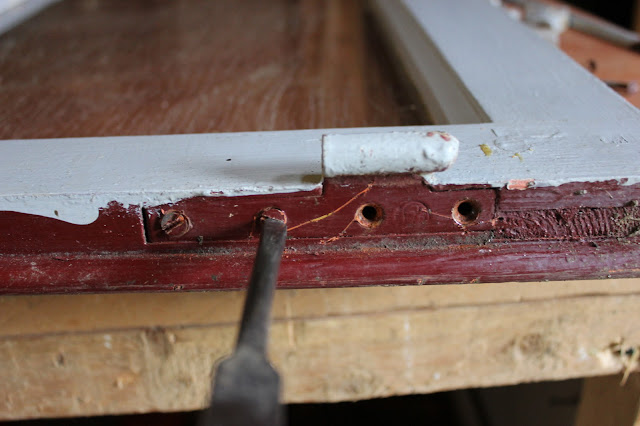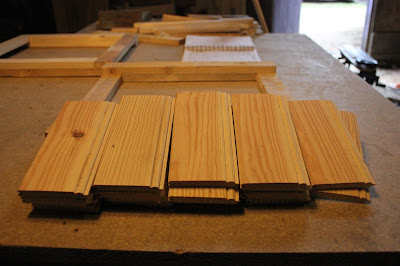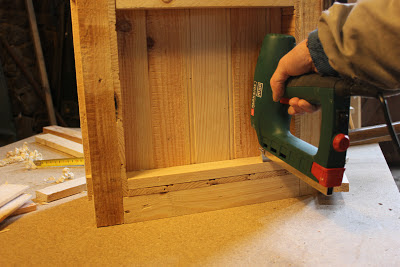The Piddleposter
A great way to process dry toilet liquid for around 6 euros or 5 dollars worth of materials.
Whether you're a homesteader/smallholder looking to cut your water consumption or someone who just wants not to have to take off muddy boots when needing to use the bathroom.....
...even though the cows may have something to say about you pinching their bedding.
Introduction
A few
months ago I received a question regarding the practicality of using
a dry toilet in a really cold climate.
My
thoughts on this are as follows:
The solid
waste from our two-bucket dry toilet system would still go into the
composter, I would advise the use of larger amounts of straw to act
as an insulator as well as furnishing the carbon necessary for the
bacteria to work. Even if the temperatures are very low, as soon as
Spring temperatures arrive, the composting process would speed up and
I would expect after the passage of two years for the compost bin
contents to be completely transformed. I would have said that if one
already has a climate able to compost vegetable matter/ garden waste
then there will be no problem with that of the toilet contents.
The liquid waste would probably be harder to dispose. Ordinarily, our urine is diluted with grey water from the house and then poured around the garden. When the temperatures are below zero I do see a problem with the frozen ground being unable to absorb this. Fortunately for us the cold spells do not last too long and normally the soil in the more protected areas of the garden are still porous.
I realise
that for people living with longer, colder Winters the liquid waste
would become a burden. So, my idea is to make a composter
specifically for handling “neat” urine and capable of producing a
valuable compost at the end of its processing.
The straw bale composter
Human urine is 95% water the rest is a rich mixture of chemicals the largest proportion being nitrogen. To make good garden compost you need a Carbon to Nitrogen ratio of about 30:1 and so the almost total carbon content of straw makes it an ideal companion in the compost bin.
This is an
idea becoming more commonly seen at outside public events as no
drainage for the liquid is required. The toilet can comprise of an
enclosure with a seat if needed and an appropriately placed straw
bale to receive the liquid direct from source.
French designers Faltazi have come up with an easily attached folded polypropylene or stainless steel 'funnel' so as to produce an ecological pissoire. The funnels are pushed into the sides of a straw bale at the appropriate height for men. http://uritonnoir.faltazi.com/en/
My
experiment was to make a suitable container for a straw bale and
empty the liquid waste from its receptacle onto it every day and see
what happens to the urine and the straw.
The Design.
Obviously
the compost bin has to fit around a straw bale. The standard bales
in Europe are now huge cylinders and are designed to be mechanically
lifted and dispersed throughout the farmer's barns.
The organic farm where we buy our grain for our birds has these same sized home-grown organic straw bales and he uses one each morning and night for the bedding of his 50 head Normandy herd.
Even so he has other livestock areas where he only uses part-bales. If we give the farmer 24 hours notice he can take a part-bale and re-roll it to a more manageable size. This is so it will fit into the rear of our estate car/station wagon, even then it is still quite a push to manhandle it into place. For 5 euros or 6 dollars we got this bale with enough left over in the deal to keep the Hen Houses supplied for several months. So for a small initial sum you can end up with some great and truly organic compost! You will probably have an organic farmers' register for your area, so check out the dairy or other livestock farms and see what they have on offer. Mixed arable farms will also have straw and again I would always go for a certified organic farm, where you can be assured of them not using chemical sprays and/or synthetic fertilisers.
The organic farm where we buy our grain for our birds has these same sized home-grown organic straw bales and he uses one each morning and night for the bedding of his 50 head Normandy herd.
Even so he has other livestock areas where he only uses part-bales. If we give the farmer 24 hours notice he can take a part-bale and re-roll it to a more manageable size. This is so it will fit into the rear of our estate car/station wagon, even then it is still quite a push to manhandle it into place. For 5 euros or 6 dollars we got this bale with enough left over in the deal to keep the Hen Houses supplied for several months. So for a small initial sum you can end up with some great and truly organic compost! You will probably have an organic farmers' register for your area, so check out the dairy or other livestock farms and see what they have on offer. Mixed arable farms will also have straw and again I would always go for a certified organic farm, where you can be assured of them not using chemical sprays and/or synthetic fertilisers.
These
bales when laid on their sides in fields will shed rainwater for some
considerable time, a desirable feature for the farmer but not for the
urine composter hence, the bale has to stand on its end to expose the
more porous part of the bale uppermost when in the composter.


The link for the design and construction of the compost bin on the left can be found here:
Pallet wood compost bin
If you've seen my other compost bin design you will know of my sliding wall plank system that I developed to ensure easy access for emptying and the facility to exchange rotten planks with new ones. For the new bin I opted for only the front elevation to be of the sliding plank format, the other three walls were to be pre-made in the workshop. This would still mean that the wall panels would be easy enough to carry into the garden for assembly on site.
The
cylindrical straw bale has a height of 120cm. Perfect for my needs as
the standard pallet plank is exactly this length.
A
waterproof lid fits on top of the container to ensure weather
protection.
Fabrication
The
three pre-constructed walls were made by nailing pallet planks to top
and bottom horizontal rails. The wooden rails of each wall were
longer than the wall width. This protruding portion fitted over or
under the other walls' rail, a clearance hole was drilled through the
two rails and a threaded bar was inserted. Nuts on the threaded bar
were tightened once the walls were in position.
On the
front elevation of each side wall was a vertical post running from
top to bottom to which the spacer rails were screwed and onto these
were screwed the retaining rails. The resultant gap between the post
and the retaining rail had to be enough to allow the wall planks to
pass.
One
important point is that the upper rails of the side walls projected
beyond the rear wall of the composter, this to provide the pivot
point for the lid.
Here is the step-by-step film showing the construction:
All the best and thanks for dropping by. Feel free to comment ask for information and/or share this article.
Cheers, Andy
© Andy Colley 2014
Here is the step-by-step film showing the construction:
Cheers, Andy
© Andy Colley 2014






















































